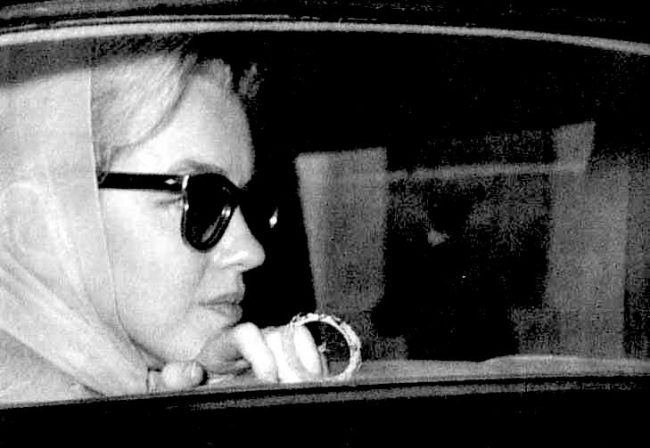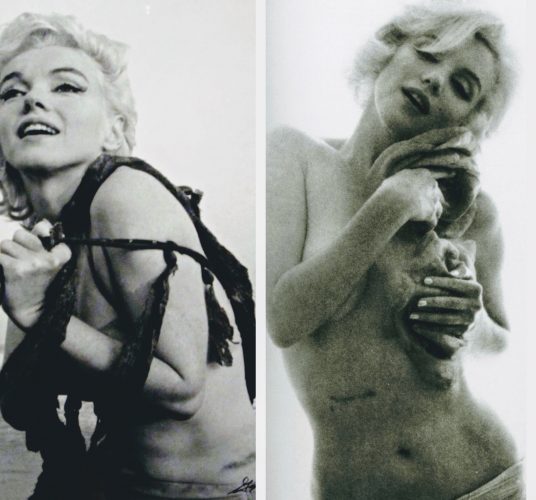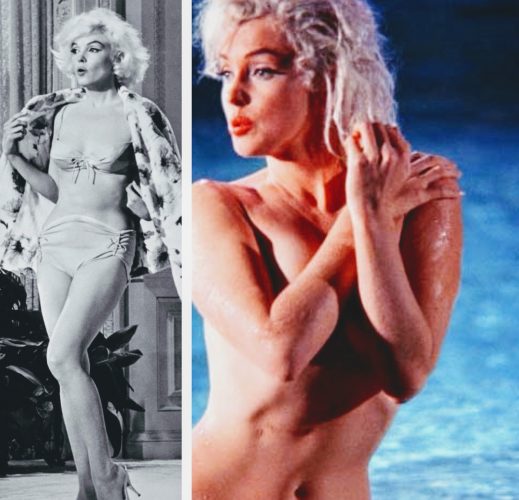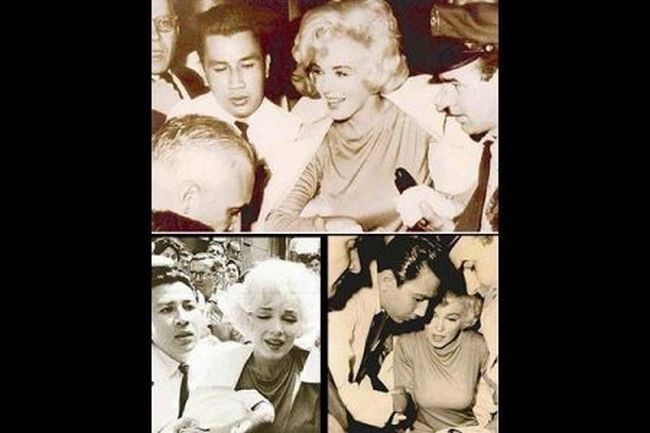
Over at The Spinoff today, there’s an extract from the New Zealand painter and poet Gregory O’Brien’s latest book, A Song in the Water. The chapter, entitled ‘A Kindness’, details his mother’s memory of attending Marilyn as a young nurse, while she recovered from foot surgery in a London hospital. It’s a touching piece, but there is no record of Marilyn having any surgery during her only visit to England in 1956, when the British press were documenting her every move. (She had injured her foot three years earlier, while filming River of No Return in Canada, but no surgery was necessary.) If Marilyn did have the operation in London, it would surely have impacted the filming of The Prince and the Showgirl. Could this be a case of mistaken identity?
“Shortly after returning from a trip to England in March 2012, I was talking with my mother over the telephone, describing an in-flight movie I had watched, My Week with Marilyn – the true story of a young film-maker who had been assigned the task of looking after Marilyn Monroe on location in England sometime during the mid-1950s. My mother took a surprising interest in hearing about the film and then told me about two nights of her life in England presumably around the same time.
Signed up with a reputable nursing agency, my mother had found herself eminently employable in post-war London … She had made the most of the twelve months she had already spent in Britain and even managed to get herself invited to a Royal Garden Party – at that time the Holy Grail of stories-to-send-the-family-back-home.
Until I mentioned the Marilyn Monroe movie, my mother had never before spoken of her employment at a central London hospital – ‘the one where all the Royal Babies were born’, by her recollection. As a contract nurse, she was always being bounced around from hospital to hospital, all over the city, with the same frequency, although for a different set of reasons, that Marilyn Monroe bounded in and out of an assortment of hospital rooms throughout her adult life.
Before being admitted to the patient’s room, my mother was taken to an adjacent office, where the nature of the night’s care was outlined. Her employment had not been arranged through the hospital – this was a separate, private contract. My mother was told that the patient was an American actress, who had earlier in the day received surgery to her feet. She was asked to sign a document or two concerning the assignment, specifically regarding the identity of the young woman in the hospital bed, who had been admitted under an assumed name.
The nature of the surgery, she was told, meant that a considerable amount of pain relief had been prescribed … With the actress as her sole charge for the night, my mother was to ensure the patient was kept warm and as comfortable as possible. If the pain became too much, a duty doctor was to be summoned. She was to remain awake, bedside, to keep an eye on things generally and also to ensure no unauthorised persons entered the room.
… Soon enough she was seated in a comfortable chair close by the bed, staring into the blonde hair of her sleeping charge and surveying, in the half-light, the well-appointed room. It was one of the best in the hospital, with large south-facing windows and good furniture.
When I asked my mother if the woman struck her as beautiful, she said that the actress was, at the time, very famous – although not quite as famous as she would be a few years later. Even my mother, not a frequent movie-goer, had recognised her instantly. She added that the actress’s appearance was perhaps a little ‘artificial’ – a word I had never heard her use before, in any context. My mother could not recall in detail any conversation that passed between them, although she could recall the woman’s sleeping head, her deep, narcotic breathing. To which she added, after further thought: ‘Oh, she was striking, yes, you could say that.’ A slight but significant revision of her earlier appraisal.
At a certain point in the night, with her charge drifting in and out of sleep, my mother herself fell into a deep slumber, from which she did not awaken until the following morning. It must have been 6am. The first thing she noticed was that one of the blankets had been removed from the bed and wrapped neatly around her. During the night, the actress had, with some considerable effort – of this my mother was certain – leaned across and, with great care, tucked her in.
About the second night, my mother had less to say … Early in the shift, my mother diligently handed over the painkillers – a formidable array, she observed, silently – and the requisite glass of water. She remained awake throughout the night, staring with girlish fascination at the face of the actress … With dawn breaking in the trees outside the brick building, a doctor knocked on the door. He told my mother that later in the day the actress was being transferred, as planned, to a private country house.”


